Research Overview
Our research spans a wide range of multi-disciplinary electrochemistry-related topics, from synthetic inorganic chemistry to electrocatalysis, renewable energy, materials science, and engineering. Our research students come from various Schools and Departments, including Chemistry, Physics, Biomedical, and Chemical Engineering, reflecting the interdisciplinary nature of our work. We employ a variety of synthesis strategies, including microwave-assisted methods, to create novel nanostructured materials for sustainable energy, environmental, and health applications.
Current research activities within the Ozoemena group focus on three main areas:
Energy Storage: This includes the development of modern batteries, supercapacitors, and supercapatteries.
Energy Conversion: Specifically, fuel cell technologies.
Electrochemical Sensors: Including chemical and immunosensors, as well as gas sensors, with a particular focus on poverty-related diseases such as tuberculosis, cholera, and drugs of abuse.
The Ozoemena group is committed to developing sustainable materials for a fossil-free energy future. This commitment drives our focus on renewable resources, inorganic and carbon materials, and environmentally benign processing methods, such as microwave-assisted synthesis, laminar flow co-precipitation method, hydrothermal processes, and electrospinning. Our work is predominantly centred on low-cost batteries using abundant mineral precursors found in South Africa, aimed at advancing energy applications.
Our research is supported by a variety of state-of-the-art equipment available in our laboratories, which can be explored in the Ozoemena Group Equipment section.
In addition, we offer a group brochure that provides an overview of all our research projects in a concise, easily digestible format.
Research Focus
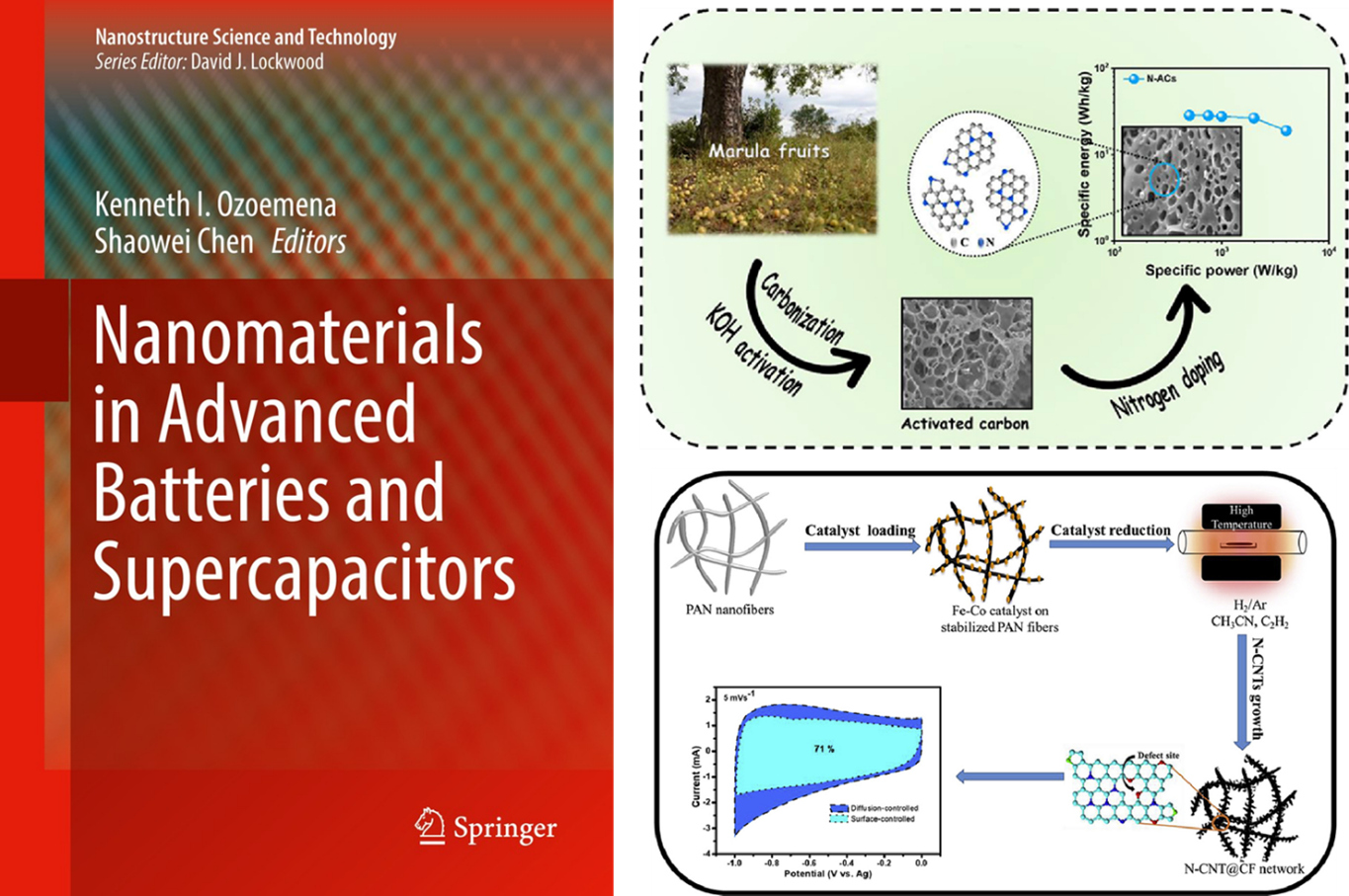
Electrochemical capacitors (‘Supercapacitors’)
Electrochemical capacitors (aka supercapacitors, ultracapacitors, or electric double layer capacitor (EDLC)) are important energy storage devices that bridge the gap between batteries (high-energy) and electrostatic capacitors (high-power). Traditional supercapacitors are most suited for applications that require burst-mode power delivery (i.e., several fast charge-discharge cycles rather than long-term energy storage, for example, uninterrupted power supply (UPS) as backup power sources (such as memories, microcomputers, system boards, and clocks), emergency doors, “stop-start” applications in modern cars, and regenerative braking energy recovery systems in vehicles, metro-rails, elevators, and cranes.
The primary limitation of supercapacitors lies in their low energy density, typically around 5 Wh/kg of electrode material, significantly lower than the ~160 Wh/kg offered by lithium-ion batteries. As a result, our research efforts are directed toward enhancing the energy density of supercapacitors while preserving their inherent advantages of high-power output and long cycle life.
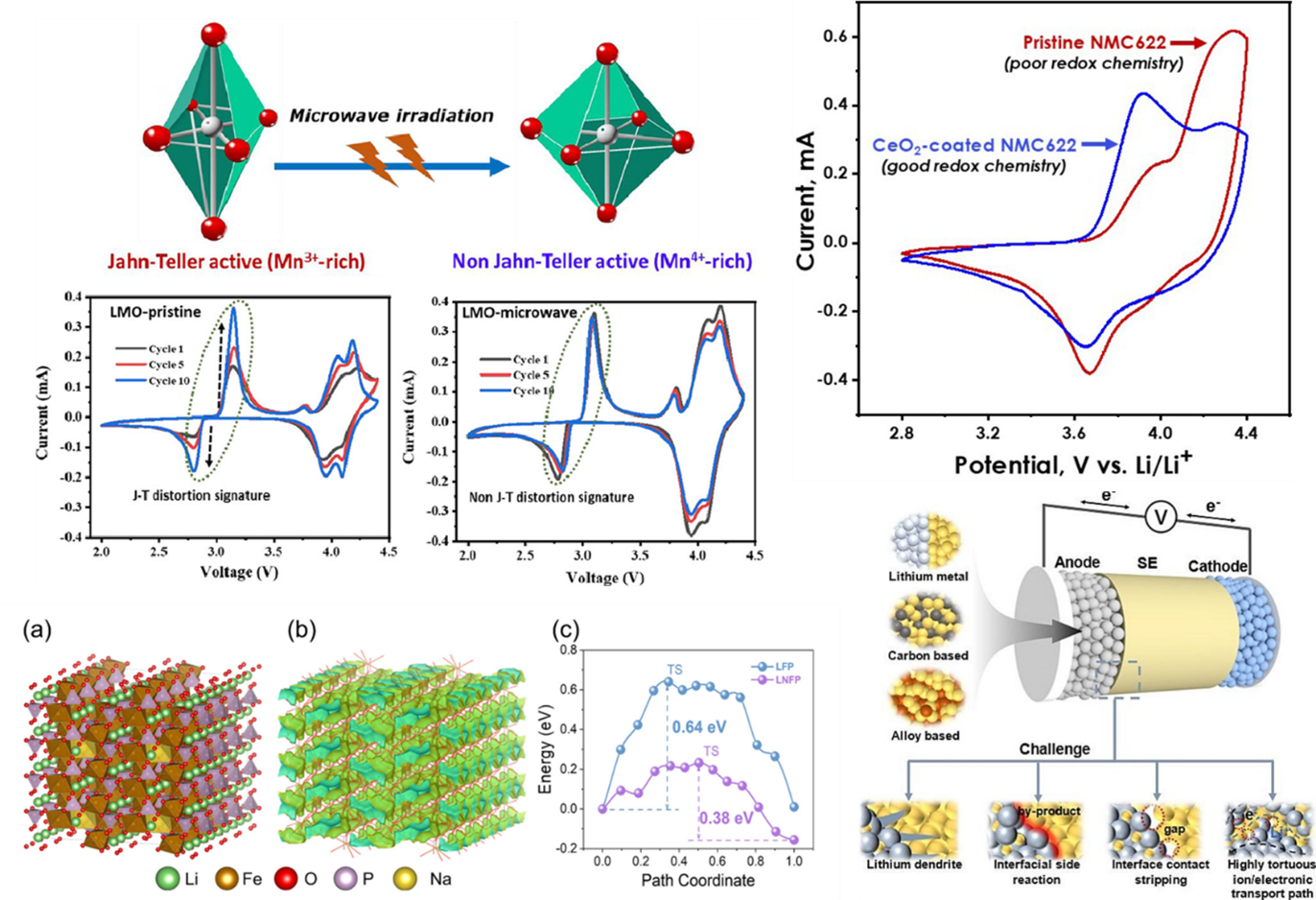
Lithium-ion batteries
Conventional rechargeable lithium-ion battery technologies have dominated (and will continue to do so for many years ahead) the markets for consumer electronics and electric vehicles. To reduce cost and enhance safety, our research is focussed on Mn-based cathode materials. We specifically focus on developing high-energy spinel, lithium manganese nickel oxide (LMNO), and high-capacity layered oxide materials, the lithium nickel manganese cobalt oxides (NMC). Some of the major challenges that conspire against the performance and widespread utilization of these Mn-based electrode materials include poor initial Coulombic efficiency and ‘capacity fading’ (i.e., loss of capacity upon repetitive charge-discharge cycles). We are solving this problem by the adopting a plethora of microwave-assisted synthesis strategies aimed at tuning the redox-chemistry and stabilizing the structure of the materials.
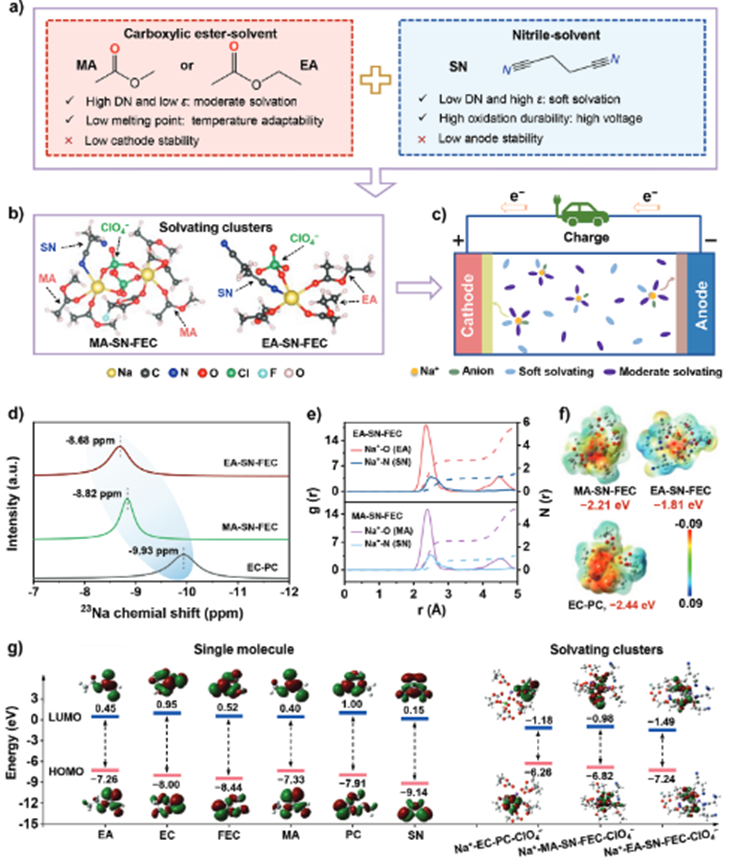
Sodium-ion & related mobile ion batteries
Sodium (Na) is described as the most viable alternative to Li; it is cheap, abundant (4th most abundant element in the earth’s crust) and is uniformly distributed around the world. We investigate sodium-ion batteries (SIB) as they represent the most attractive alternative to LIBs, especially for stationary or home-electricity storage applications (due to weight considerations). Mn-based rechargeable aqueous mobile ion batteries (RAMIB) are being investigated in our group. Apart from Na-ion carrier, we are interested in other ions (such as K+, Zn2+ and Mg2+) and dual carrier
systems (such as the Na-Zn hybrid).
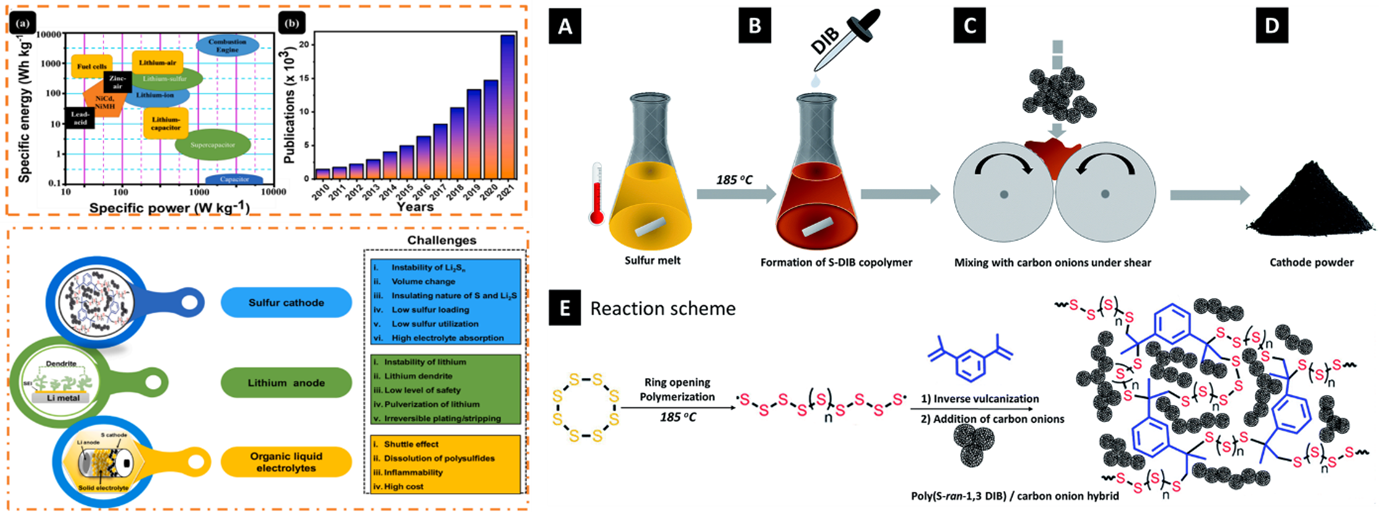
Lithium-sulfur batteries
Rechargeable lithium-sulfur battery (LiSB) is one the most promising next-generation battery technologies. It is potentially a low-cost energy storage system due to the natural abundance and non-toxicity of elemental sulfur and offers very high theoretical energy density (2500 Wh kg-1). However, the application of LiSB has been hindered by inter-related challenges of poor utilization of the insulating sulfur, and polysulfide shuttling event. We plan to solve these problems by strategic imprisonment of the sulfur and/or the use of high-performing electrocatalysts.
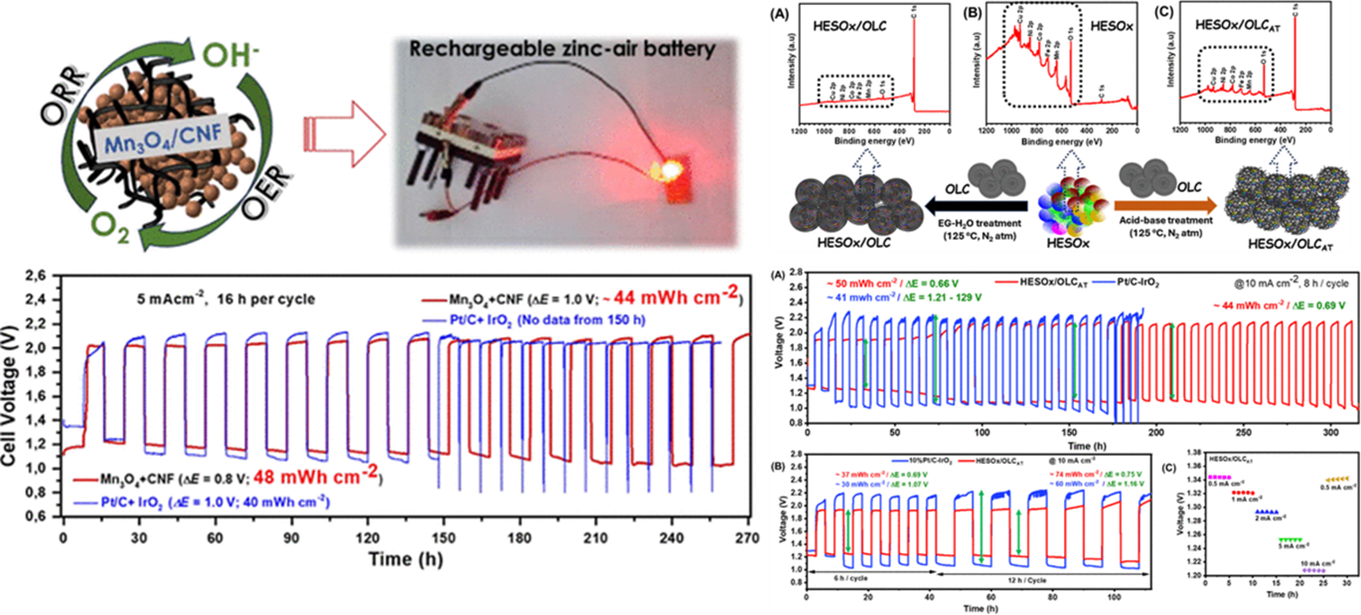
Zinc-air batteries
Rechargeable aqueous zinc-air battery (RAZAB) is a next-generation battery for stationary/home electricity storage and portable electronics; it is a low-cost, high theoretical specific capacity (1086 W h/kg) battery that utilizes atmospheric oxygen. The key challenges to commercialization are low cycle life and the inability to find the best-forming bifunctional electrocatalysts for oxygen evolution reaction (OER) and oxygen reduction reaction (ORR). We explore various electrode materials as potential bifunctional electrocatalysts for the development of RAZAB.
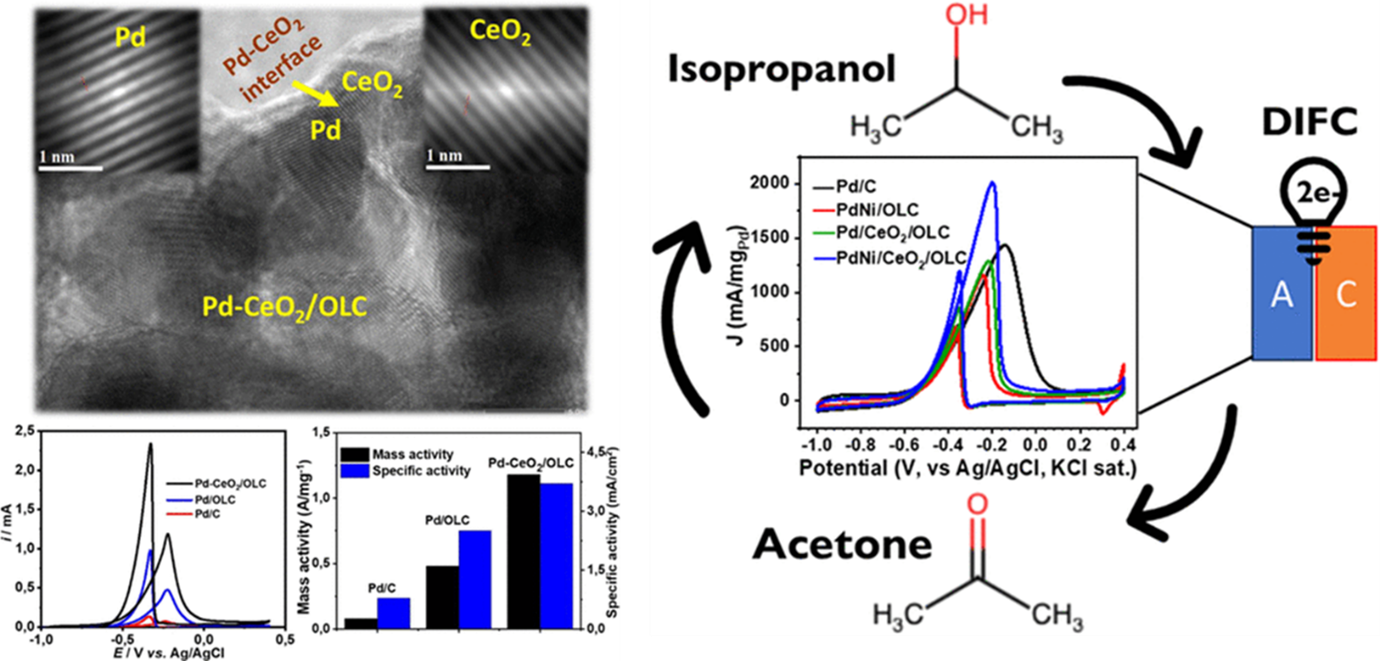
Fuel cell technologies
A fuel cell is an electrochemical reactor that converts chemical energy directly to electricity. The anodic reactions involve hydrogen oxidation reaction (HOR) and alcohol oxidation reaction (AOR) are driven by precious metal nanostructured catalysts while the cathodic reaction involves oxygen reduction reaction (ORR) and can be driven by either precious or non-precious nanostructured electrocatalysts. The key research challenges include reducing the mass loading of the expensive precious metals and improving the electrode kinetics. To tackle these problems, our research is focused on developing Pd- and Pt-based anode bimetallic and ternary catalysts as well as electrode support materials.
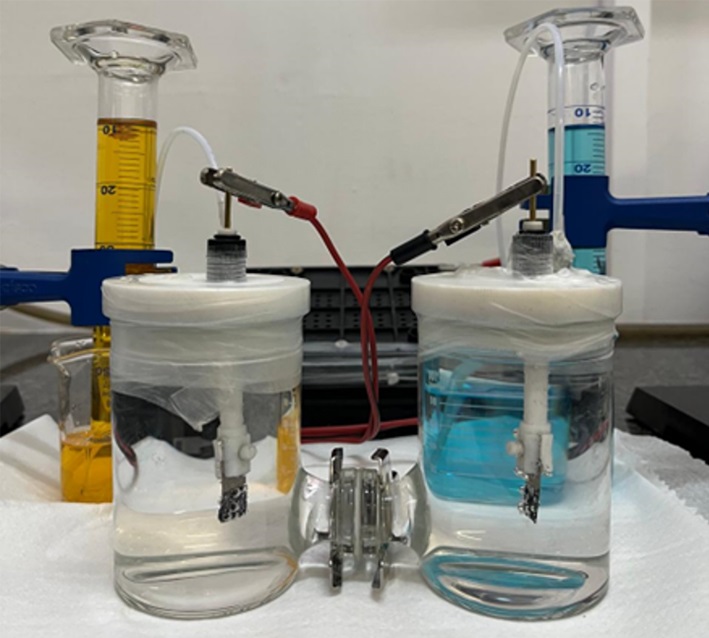
Four Zn–air batteries connected in series to split water and generate green hydrogen
Electrolyzers (electrochemical water-splitting)
Renewable electricity-powered electrocatalytic water-splitting is a promising strategy to produce clean hydrogen and oxygen fuels from abundant water resource, which is crucial for energy security and emission reduction. The development of bifunctional electrocatalysts which are capable of concurrently enhancing the sluggish kinetics of hydrogen evolution reaction (HER) and oxygen evolution reaction (OER) is critically important to achieving very efficient overall water splitting. Our research is focused on developing low-cost bifunctional electrocatalysts (such as carbon and base metal materials).
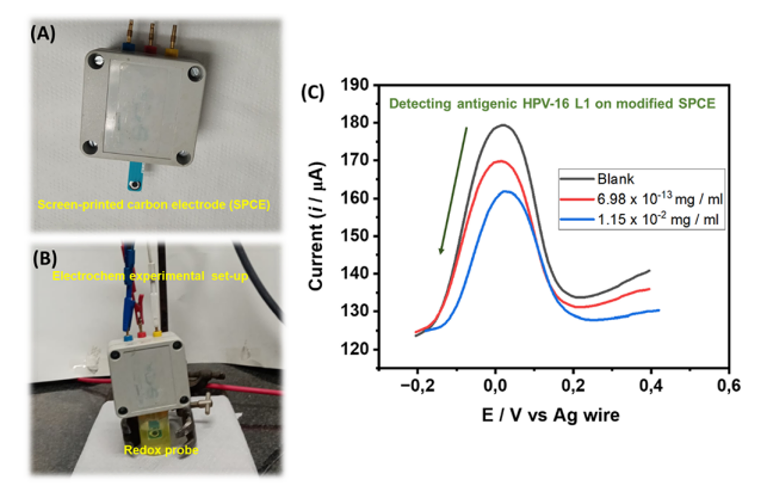
Set-up of a screen-printed carbon electrode (SPCE) modified with HPV-16 L1 antibody immunosensor, (C) typical square wave voltammetric responses toward antigenic HPV-16 L1 protein. Peteni et al. ACS Sens. 2023, 8, 2761−2770
Electrochemical sensors
Various electrochemical sensors (including immunosensors and gas sensors, focusing on poverty-related diseases such as Tuberculosis, cholera, and alcohol and drugs of abuse) are being developed in our group. Some of the materials we develop for energy storage and conversion systems work well as electrochemical sensor materials. Here, the aim of our research is to meet most (if not all) of the WHO’s ASSURED criteria (Affordable, Sensitive, Specific, User-friendly, Robust and rapid, Equipment-free, and Deliverable to those who need them).

Solid-state electrolytes
Solid-state electrolytes promise to complement the conventional liquid electrolytes for energy storage and conversion systems; they are safer to use and may allow the commercialisation of high-voltage and high-capacity cathode materials. We are currently studying several materials for potential development of all-solid-state, flexible, wearable energy storage and sensor devices. For example, some of the materials being explored are nanocomposite polymer electrolytes (electrospun nanofibers re-enforced with ceramic materials, including the Garnet-type oxide family, Li7-xLa3Zr2-xMxO12 (LLZM, where M = dopant such as Al).



